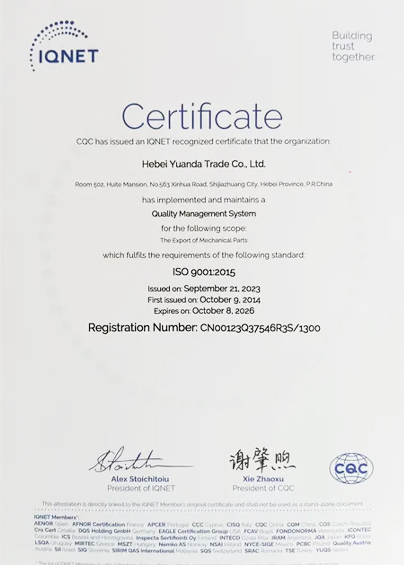Mobile:+86-311-808-126-83
Email:info@ydcastings.com
Understanding the Role of Turbine Housing in Enhancing Turbocharger Performance and Efficiency
The Role of Turbine Housing in Turbochargers
Turbochargers have revolutionized the automotive industry by enhancing engine performance and efficiency. At the heart of a turbocharger lies its turbine housing, a critical component that significantly influences the turbocharger's overall functionality. Understanding the role of turbine housing is essential for both automotive enthusiasts and professionals involved in engine design and modification.
What is Turbine Housing?
Turbine housing is the component that encloses the turbine wheel of a turbocharger. It is typically made of cast iron or a high-temperature alloy that can withstand extreme heat and pressure generated during engine operation. The primary purpose of turbine housing is to facilitate the efficient conversion of exhaust gas energy into mechanical energy, which ultimately drives the turbocharger's compressor wheel.
Design and Functionality
The design of the turbine housing is crucial to its performance. It has an inlet where the exhaust gases enter and an outlet that directs the gases into the turbocharger's exhaust system. The housing's internal shape is designed to optimize the flow of exhaust gases towards the turbine wheel. This flow optimization is critical because it directly impacts the turbocharger's spool-up time and overall efficiency.
One of the key design considerations for turbine housing is its size and shape, often referred to as the A/R ratio (area to radius ratio). A larger A/R ratio allows for a greater flow of exhaust gases, which is beneficial for high horsepower applications. However, this can lead to increased turbo lag, as it takes longer for the turbo to spool up. Conversely, a smaller A/R ratio provides quicker spool-up times but can restrict airflow at higher engine speeds. Balancing these characteristics is vital for achieving the desired performance goals, whether for racing applications or daily driving.
Material Choices
turbine housing turbocharger

The materials used in turbine housing construction are selected for their ability to withstand high temperatures and pressures. Common materials include cast iron, which is durable and cost-effective, and stainless steel, known for its higher performance at elevated temperatures. The choice of material can also impact weight and heat dissipation, further influencing turbocharger efficiency.
Heat Management
Heat management is another critical aspect of turbine housing functionality. During operation, the turbine housing absorbs a significant amount of heat from the exhaust gases. Effective heat management can enhance performance by reducing turbo lag and improving the turbocharger's lifespan. Many modern turbochargers incorporate features such as thermal barriers and heat shields to mitigate heat transfer to other engine components.
Upgrading and Customization
For performance enthusiasts, upgrading the turbine housing can be a pathway to achieving specific performance goals. Aftermarket options are available that offer different sizes and geometries tailored to unique applications, from street performance to motorsport racing. These upgrades can lead to significant gains in power and response, but careful consideration of the overall engine setup is necessary to ensure compatibility and optimal performance.
Conclusion
In summary, the turbine housing of a turbocharger is a foundational component that plays a vital role in engine performance. Its design, material choice, and heat management capabilities directly influence the efficiency and responsiveness of the turbocharger. As automotive technology continues to evolve, understanding the intricacies of turbine housing will remain crucial for maximizing engine performance and achieving the desired driving experience. Whether for daily commuting or high-performance racing, appreciating the importance of turbine housing is an essential aspect of turbocharging technology.
-
Why Should You Invest in Superior Pump Castings for Your Equipment?NewsJun.09,2025
-
Unlock Performance Potential with Stainless Impellers and Aluminum End CapsNewsJun.09,2025
-
Revolutionize Your Machinery with Superior Cast Iron and Aluminum ComponentsNewsJun.09,2025
-
Revolutionize Fluid Dynamics with Premium Pump ComponentsNewsJun.09,2025
-
Optimizing Industrial Systems with Essential Valve ComponentsNewsJun.09,2025
-
Elevate Grid Efficiency with High-Precision Power CastingsNewsJun.09,2025











